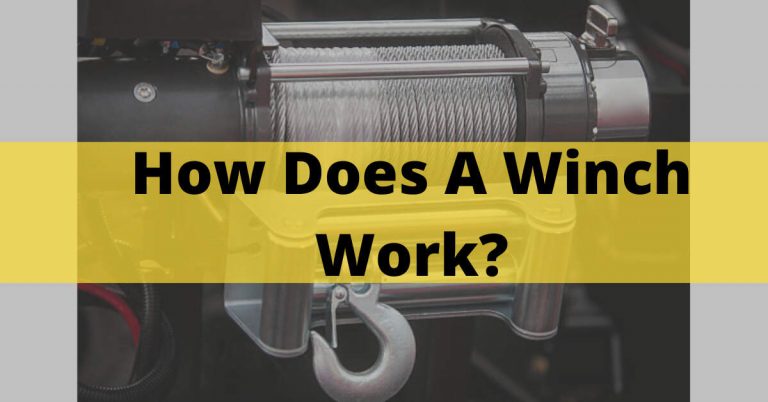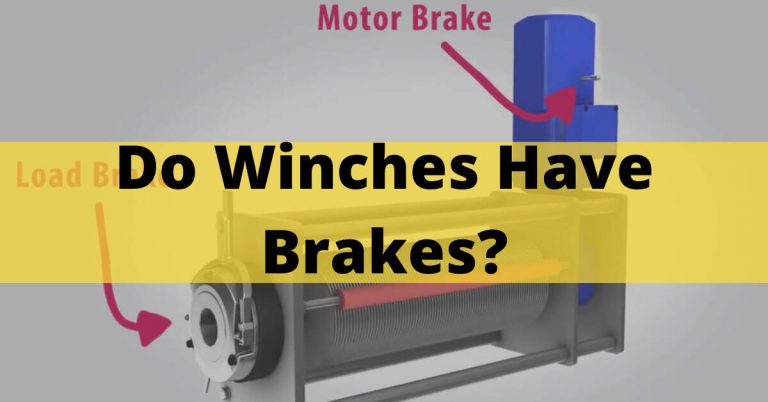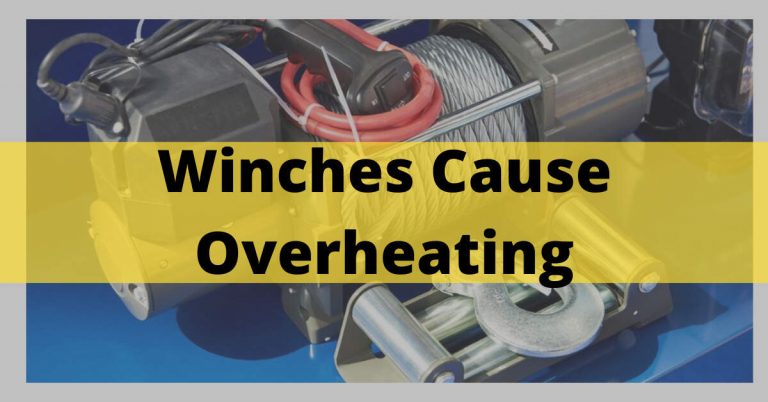How To Connect The Winch To The Battery? Step-by-Step Info In 2024
Firstly, link the winch to the battery. The wire gauge that your winch needs must be 4 or 8-gauge wire is typically needed for winches. When you know the gauge, you can choose the correct fuse and holder for your application.
The next step is to confirm that your battery is securely fastened. It is highly critical if you’re driving an off-road vehicle that vibrates a lot. While driving, you don’t want your battery to bounce around and possibly fall free.
Once your battery is safely mounted, use the proper size wire and connections to connect its positive terminal to the positive terminal of the winch. Finally, attach the battery’s negative terminal to a reliable ground point on the vehicle’s structure.
Methods Are Used For Wiring A Winch To The Battery
There are numerous ways to wire a winch, but you must follow three requirements.
- The user must mount the winch; it may be mounted at the front or rear of the vehicle.
- The second thing that you must do is a winch. Again, the vehicle is equipped with several kinds of winching. Light-duty, medium-duty, and heavy-duty winching are some of them.
- Small to medium inclines are handled by light-duty winching, which operates below the winch’s weight limit. The medium-duty winching handles modest inclines and pulls within the weight limits of the winches.
- The heavy-duty category is reserved for very large, nearly winch-capable loads. The complex and inclining terrain is also handled by heavy-duty. When performing heavy-duty wrenching, it is advised to use a second battery due to the nature of the operation.
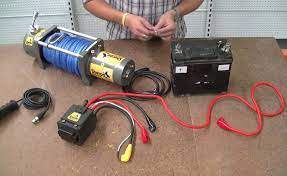
How To Wire A Winch On A Trailer?
You should know a few things before beginning if you want to add a winch to your trailer. You have to decide where the winch will be positioned on the trailer. After choosing a spot, it’s time to begin wiring.
A step-by-step tutorial for wiring a winch on a trailer is provided below:
- The power wire runs from the battery to the location of the winch. Make sure there isn’t any slack in the cable as it travels from the battery to the winch.
- Next, attach the power cable’s one end to the battery’s positive terminal using ring terminals or lugs to keep it in place.
- The power wire is run through any gaps in your trailer frame until it reaches the space behind the mounting spot you have chosen for the winch. You must use caution to avoid pinning or harming the power cable when completing this step.
- Start firmly fastening the power cable to your trailer frame using zip ties or other similar fasteners after you have guided it through all openings and arrived at your preferred mounting place. Ensure the power line is completely taut so it cannot be yanked-free while your winch is in use.
- The last step is to join the ground wire, which should be green, to the bare metal on your trailer frame with one end and the bare metal on your winch motor housing with the other end using ring terminals or lugs and once more fastening them with nuts and bolts.
How To Wire A Winch Without A Solenoid?
There are a few considerations if you wire a winch without a solenoid.
You must first have a high-quality wiring kit. It will guarantee that your winch is securely connected and correctly wired.
Additionally, you should confirm that the battery you’re using can support the weight of the winch.
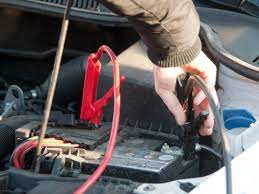
Your winch will function less effectively and might even become damaged if your battery weakens. Finally, before wiring your winch, follow all directions correctly.
If done incorrectly, you risk damaging your vehicle and your winch.
How to Wire a Winch to a Truck. You can connect a winch to your truck in many ways, but the most popular and straightforward method is connecting it directly to the battery.
It will guarantee that your winch has power and is available whenever you need it. Before you begin, you will need a few essential tools and materials, such as:
- A length of heavy-duty wire
- Eyelets or ring terminals
- Wire strippers
- Crimping tool
- Tape
- First, remove about 3 inches of insulation from each end of the heavy-duty wire with your wire strippers.
- Next, secure one end of the wire with an eyelet or ring terminal before doing the same with the other.
- The positive (red) lead from your winch will connect to the positive terminal on your battery.
- The eyelet or ring terminal must be threaded onto the battery post and then tightened with a tool.
- Now, using an eyelet or ring terminal like before, attach the opposite end of the positive lead from your winch to one of the battery connections.
- As a good ground for your system, connect the negative (black) lead from your winch directly to one of the bolts holding the frame of your truck together as the last step.
- Once more, use an eyelet or ring connector and tighten it with a wrench, then tape over any exposed metal for added security.
How To Wire A Front-Mount Vehicle?
There are two ways to supply power when a winch is installed at the front of the vehicle. The following are two of these methods:
1. Method #1:
Winch Wiring Using The Battery Of The Vehicle:
This type of winch is regularly advised for light- and medium-duty winches. A powerful battery with a cold ranking of 440 amps and a 60 amp alternator is needed.

Steps:
- Attach the powered wire to the winch’s post’s positive terminal.
- You must attach the negative wire to the winch’s negative post.
- From the winch to the engine compartment, run both wires.
- Connect the positive terminal of the lead from the winch to the positive terminal of the vehicle’s battery using an inline circuit breaker.
- Connect the negative terminal of the lead and the battery’s negative terminal once more.
- Ensure that fast disconnects are installed so the winch can be easily removed when not in use.
2. Method #2:
Powering The Winch Using A Backup Battery:
This type of winch is suggested for frequent, heavy-duty, and medium-duty winching applications. This technique requires a 60 amp alternator and an extra vehicle battery with a cold-cracking capacity of 441 to 661 amps.
Steps:
- The vehicle’s and auxiliary batteries should be wired in parallel. Once more, the total output of the batteries should equal 12 volts.
- Ensure that the battery insulator is mounted between the vehicle’s primary and backup batteries.
- Verify that the power wire’s positive terminal is attached to the positive terminal of the post on the vehicle’s battery.
- Verify that the isolator is operated separately from the ignition circuit.
- Join the power wire to the winch’s positive post.
- Attach the negative wire to the winch’s negative ground post.
- From the winch to the engine compartment, run both wires. Watch out for tossed cables. It would help if you, therefore, took care to prevent any damage to the cables.
- Join the winch’s positive lead to the positive post of the backup battery.
- Join the ground post to the winch. The extra battery’s negative ground post should receive the negative lead.
- Check that the quick disconnects on your connection are parallel to the power and ground wires.
- To operate the winch, connect the lead from the vehicle’s backup battery side to the lead on the winch side.
Wiring Trailer-Mounted Winch
There are two ways to wire a winch mounted on a trailer. Here is a discussion of these techniques.
1. Method-01:
Wiring The Winch With A Trailer And A Wiring Kit:
It is advised to often use light-duty to medium-duty winching. The necessary battery vehicle should have an alternator that can produce 60 amps and a cold ranking of 440 amps.
Fast disconnects are used during the winching process to provide simple connections between the trailer-mounted winch and the vehicle’s battery power source.
Steps:
- Locate a location to install the vehicle side fast disconnect at the end of the extended power cable and the short ground wire.
- Locate a clean metal spot on the car’s frame where you may ground the disconnected short wire.
- Run the extended power from the quick disconnect to the vehicle’s battery while the engine runs.
- Ensure the wires are not pitched and stay away from heated spots.
- Connect the vehicle’s positive back wire to the battery’s positive post.
- Using a short wire with eyelets at both ends, ground the battery to a spotless metal surface on the car’s frame. Separate the short wire from the other cords you’re using.
- Connect the winch to the trailer-side quick disconnect.
- Attach the winch’s positive post to the positive wire.
- Join the earth wire to the negative ground post of the winch.
- Join the wires’ opposing ends.
2. Method-02:
Wiring The Winch To The Auxiliary Trailer-Mounted Battery:
You can use it for both conventional and heavy-duty winching. It is used in a car with a 60 amp alternator and a cold-cranking 441 amps. You don’t need to connect the trailer to the car for the winch to get power.
A different battery is employed to prevent the vehicle’s battery from being depleted before the operation is used.
Steps:
- Attach the trailer battery to the front in a secure location. Battery life is increased by secure positioning since it protects the battery and keeps it from damage. Keep the battery inside of a toolbox.
- Attach the ground lead and power lead to the winch’s right post.
- Connect the trailer-mounted battery’s positive and ground wires.
- Attach the positive wire to the battery’s positive post and the negative wire to the storm’s negative pole.
- To ensure the charge is kept, charge the battery frequently. The charge will be maintained at a 12v circuit when there is additional wiring.
- The current is delivered after connecting the 12v accessory circuit and the seven-way trailer. The 12-gauge wire and the trailer-side connector both connect.
- Ensure that the trailer’s end and the ground are well-connected to the flame.
- Use 12-gauge wire to ground the trailer battery and frame.
- Attach the ring terminal to the wire’s ends.
- Attach one end of the ground wire to the negative post on the trailer battery.
- Use a self-tapping screw to attach the remaining component to a spotless metal surface at the vehicle’s frame.
- When the vehicle operates and the trailer and car are connected, the 12-voltage wire will keep the trailer-mounted battery charged.
Frequently Asked Question:
1. Can You Hook Up A Winch Directly To A Battery?
If the battery terminal clamp bolts are long enough, attaching the winch electrical connections straight to them is feasible. Still, you may wish to spend the money and install the military-style terminals as indicated.
2. How Do You Wire A Winch Battery To A Truck?
Connect the truck winch to the truck before wiring it. Connect the winch control box’s negative wires to the truck’s battery’s negative terminal.
3. How Do You Keep A Trailer Battery Charged On A Winch?
A ground wire from the winch battery’s negative post will connect to the trailer’s frame. The winch battery will then be kept charged while driving, thanks to the vehicle charging system.
Conclusion:
Wiring a winch to a battery is a simple process when done
correctly. Understanding the procedures for winch wiring is crucial. Doing it yourself will be much simpler and less expensive than asking for help.
The 12 volts auxiliary wire will be overloaded regardless of whether you detach. The overabundance could harm the battery and the circuit.
References

